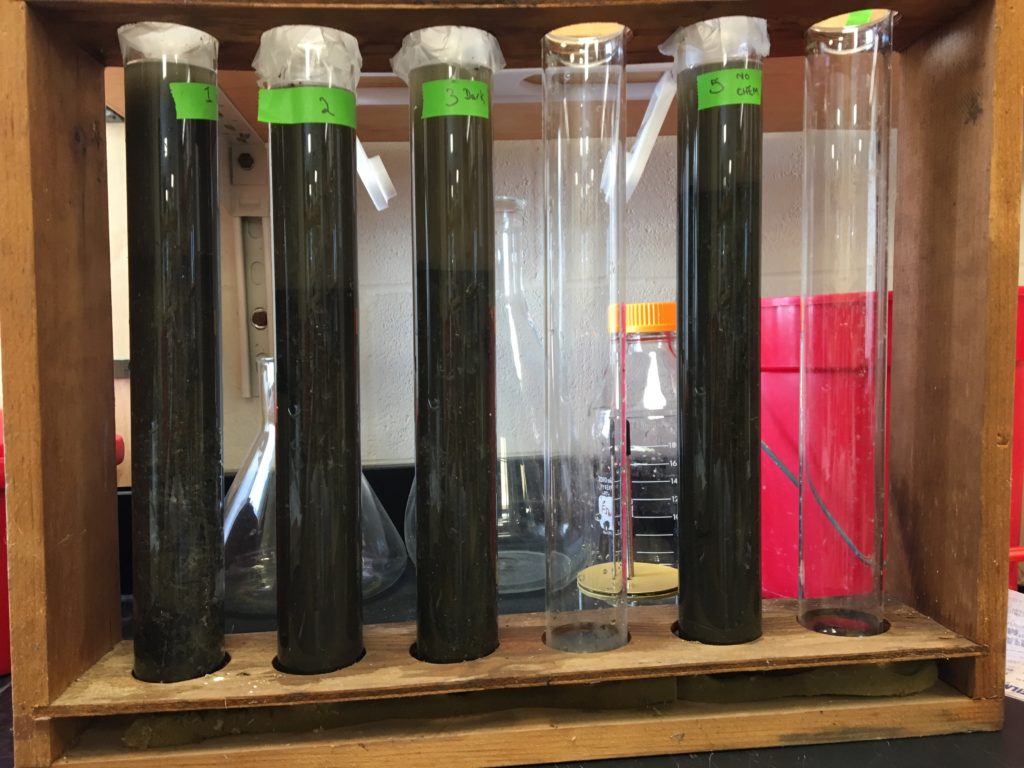A muddy little piece of history

One thing I like about working at WHOI is the rich oceanographic history…I can’t take any personal credit for it, but I’m proud to be a little part of it. And it sometimes affects my daily life in fun and interesting ways. I’m currently co-teaching our Introduction to Biological Oceanography Class, and as a project, we decided to build some Winogradsky columns. These are columns of marine sediments that incubate over some period of time and typically develop visible bands – like a layer cake – resulting from distinct microbial metabolic pathways…aerobic and anaerobic, photosynthetic and heterotrophic, wonderful variations of oxidation and reduction of carbon, oxygen, sulfur, nitrogen and iron. They aren’t necessarily high-tech. I was planning to build ours in some old spaghetti jars…
…So I waded out into the mud, filled my bucket and headed back to the lab. As I was hosing off my boots, I ran into a colleague. We started talking about the Winogradsky columns, and he said, “I think I’ve got something for you! There’s an old rack of tubes in the warehouse that belonged for Holger Jannasch, and I think that’s exactly what they are for.” He brought back a dusty, rickety custom rack holding half a dozen perfectly-fitted beautiful (but similarly dusty) glass tubes. It felt magical. Holger Jannasch was a pioneer in the field of deep-sea microbiology, and I can’t think of any cooler way to use his old labware to teach students about sedimentary chemistry.
The columns are still maturing. So far we can see oxic and anoxic layers, some algae on the sides, and maybe some sulfate reduction. We’re waiting to see if we develop other layers, such as purple and green sulfur bacteria. And I think I still have things to learn about setting up a “good” sediment column. But like Holger, I’m an experimentalist, so there’s always room to improve.